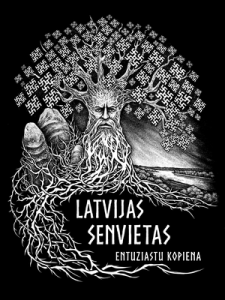Contains information from the project:

7,4 m long, 4,4 m wide, 2,1 m high, dark grey.
The stone fell into its current location from the apron of Vanapagan’s wife. The grooves or tracks pressed into the stone by the aprons can still be seen. People danced and lit bonfires of piles of juniper boughs here. Later on farmers broke off the gateposts and signposts. Vanapagan is one of the best-known mythological creatures in Estonian folklore, transforming landscapes, leaving prints on stones and competing with Vanajumal, the thunder god. He is a cross between the Christian version of Satan and a simple-minded nature spirit. The writer Jaan Kaplinski has noted that the traditional indigenous Vanapagan was not absolute evil as was the foreign Satan.


